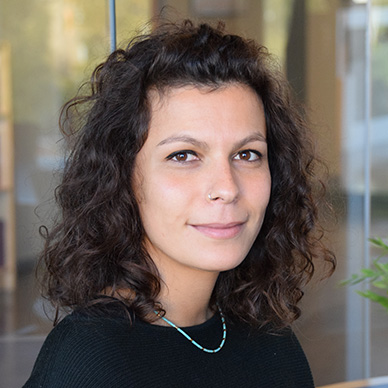Erika Biagini and Lucia Ardovini
In a recent attempt to debunk his image as one of the Middle East and North Africa’s cruellest dictators, former Army General and current President Abdel Fattah al Sisi launched Egypt’s latest Human Rights Strategy. Announced during the 20th anniversary of the 9/11 attacks that shaped world politics for the last two decades under the US-led War on Terror and global counterterrorism efforts, Egypt’s new plan seeks to promote social, economic, political and cultural rights along four main axes. It includes a comprehensive concept of human rights enshrined in state’s institutions and also aims to enhance and consolidate Egypt’s efforts to support the rights of women, children, the elderly, the disabled and all other marginalized sections of society. As part of this strategy, the Egyptian President has also alluded to the possibility that a peaceful settlement with the banned Muslim Brotherhood might be sought. Should the senior Muslim Brotherhood leaders decide to negotiate a peaceful settlement with Egypt’s ruler, it remains to be seen whether or not they would be able to rally the movement’s members behind this decision.
The Muslim Brotherhood (henceforth: Brotherhood) is Egypt’s oldest Islamist group. Established in 1928 by Hassan al-Banna to counter British colonialism, the movement has since coexisted with the Egyptian state in alternating periods of accommodation and repression for over 90 years. After the popular uprisings that deposed long-standing dictator Hosni Mubarak in 2011, the Brotherhood, by then the most organized opposition group in the country, was best placed to seize key victories at the polls in both the country’s first free and democratically held parliamentary and presidential elections. In 2012, the Brotherhood emerged as the largest block in parliament and one of its members, Mohamed Morsi, became Egypt’s first democratically elected civilian president. Morsi and the Brotherhood did not fare well in power and after only 12 months of rule, the Egyptian military took the opportunity of mass popular protest against Islamists to intervene and remove the Brotherhood from government. In December 2013, Egypt declared the Brotherhood a terrorist organization, seized all of its assets and heavily repressed the group.
Since 2013, thousands of Brotherhood members and supporters from across the organizational and generational spectrum have been imprisoned, killed and forced into exile to escape persecution. Leaders have been handed lengthy prison sentences to ensure they would never see the light of day again (most leaders in 2013 were in their 60s and 70s). In prison, they were denied medical attention as a way to speed up their death, like in the case of former president Morsi who collapsed during a court hearing in June 2019 after having been denied medical attention since his arrest. Today, thousands of members, both men and women, senior and young, remain languishing in Egypt’s prisons with little prospects to be released. The Brotherhood’s lack of proactivity towards their liberation has also created issues of contention between the leaders and the prisoners’ families, who said they are ready to stay away from politics in exchange for their loved ones’ freedom.
The Brotherhood has always thrived under repression. For decades, repression has provided the movement with a common narrative of tribulation that strengthened its collective identity and members’ loyalty and commitment towards the leaders and the group’s goals. However, our study shows that there are elements of the current crackdown that make this wave of repression qualitatively different from previous ones and which complicate the Brotherhood’s ability to maintain a united front and political strategy. This means that regardless of whether the leadership should decide to enter negotiations with Egypt’s strongman or not, their response will not account for that of the entire organization.
In the introduction to our special issue “Assessing the Egyptian Muslim Brotherhood after the 2013 Coup: Tracing Trajectories of Continuity and Change” published in the journal Middle East Law and Governance, we brought together a pool of renowned Brotherhood scholars to investigate how the context in which the Brotherhood finds itself since 2013 has affected its internal dynamics, bringing new internal and external challenges to the fore. The contributors to the special issue all asked “How is the Brotherhood responding to the challenges presented by its fall from power, particularly in light of the current wave of repression and perceived political failure?” and “What role are individual members playing in shaping the current debates and strategies at the heart of the organization’s restructuring?”. A common thread of the different analyses running through the Special Issue shows that the Brotherhood is no longer a united movement, but rather that the responses of individual members are now driving the organization’s rebuilding and strategies to an extent never witnessed before. The emergence of members’ proactivity and individual agency vis-à-vis the Brotherhood’s senior leadership’s directives are due to new elements that make this repression qualitatively different from previous ones, which complicate the Brotherhood’s prospects to promote a united front against the al-Sisi regime.
The four elements that we identify as bearing significance on the current repression are the following. First, since 2013, repression has been indiscriminate, affecting both the Brotherhood’s leadership and its rank and file members alike, who were previously unfamiliar with such levels of regime brutality. This has engendered different responses from members for whom repression is therefore somewhat new. Second, the crackdown took place just after the Brotherhood had governed Egypt for the first time—a test that exposed the ineptitude and lack of political vision of its leadership, leading many to question their commitment to the Brotherhood’s political vision and project. Third, since 2013, women and youth members, traditionally among the most marginalized sub-groups of the movement, have been playing an increasingly proactive and independent role. This challenges the traditional isolationism of the senior leadership and the core movement’s principles such as loyalty and obedience to the movement and its leaders, opening spaces for alternative responses to repression to take shape. Fourth, the scattering of the movement across different geographical contexts. Since 2013, a large number of leaders and rank and file members have relocated to Malaysia, Qatar, Sudan and Turkey, but significant numbers also headed to the UK and North America, among other countries, and members’ competing responses to repression in these national contexts have severely fragmented the Brotherhood organization, making it significantly difficult for the Historical Leaders to promote a cohesive political strategy.
The 2013 repression, therefore, constitutes a watershed moment in the history of the Brotherhood, which has caused a majority of members to question the rules and principles over which the movement historically rested and, most importantly, the aim and viability of the Brotherhood’s political project. At present, a variety of members’ sub-groups, all claiming their affiliation to the Brotherhood but operating across different national contexts, claiming loyalties to competing movement’s off-shoots, and pursuing diverse opposition strategies, are engaged in the process of rebuilding a fragmented organization. This makes the organization deeply divided in terms of both ideological and operational responses, raising questions on the extent to which a deal negotiated by the senior leaders who claim little legitimacy can be said to reflect the will of the entire movement. Rather, the Brotherhood should aim to mend its internal divisions before seeking a settlement with the current Egyptian regime, something the leaders have not managed to achieve in over seven years.
Assessing the Brotherhood’s responses from the perspective of the individual members has therefore become necessary to understand what political role, if any, the Brotherhood is likely to play in the future either in Egypt or abroad. This is so due to the fact that now individual members are playing a key role in reshaping the movement and its future trajectories. Focusing on what individuals believe the movement’s goals, identity and strategies to move past the current crisis should be, also implies that we need to overcome dominant visions of the Brotherhood as a monolithic and united organization. This also means that whatever the decision of the senior Brotherhood leaders will be—either to engage in talks for potential pacification with al-Sisi’s regime or not—they no longer speak for the entire organization. Rather, scholars and policymakers alike should take into consideration how individual responses, geographical contexts, different claims and strategies play a role in any future assessment of the Brotherhood and its politics. Indeed, any attempt at pacification or lack of it has the potential to harden those internal divisions within the Brotherhood, particularly if taken by a handful of senior leaders who no longer hold the legitimacy and loyalty they once did.
 Erika Biagini is Assistant Professor in Security Studies in the School of Law and Government at Dublin City University. Her area of expertise lies at the intersection of Islamism, gender and politics. She lived extensively in Egypt, where she conducted research on the Muslim Brotherhood and the activism of its female members, the Muslim Sisterhood, in the aftermath of the 2011 uprising. Her current research interests address the areas of subjectivity, identity and feminist politics among Islamist women activists, the gender politics and sexuality of Islamist movements and the evolution of the Egyptian Muslim Brotherhood since the 2013 repression.
Erika Biagini is Assistant Professor in Security Studies in the School of Law and Government at Dublin City University. Her area of expertise lies at the intersection of Islamism, gender and politics. She lived extensively in Egypt, where she conducted research on the Muslim Brotherhood and the activism of its female members, the Muslim Sisterhood, in the aftermath of the 2011 uprising. Her current research interests address the areas of subjectivity, identity and feminist politics among Islamist women activists, the gender politics and sexuality of Islamist movements and the evolution of the Egyptian Muslim Brotherhood since the 2013 repression.
 Dr. Lucia Ardovini is a Research Fellow at the Middle East and North Africa Programme, Swedish Institute of International Affairs (UI). Her research focuses on current trajectories of Islamist movements across the MENA region, with a special focus on the Egyptian Muslim Brotherhood. In particular, she is tracing the organization’s restructuring process following the 2013 coup, examining its repercussions on ideology, identity, and organizational structures.
Dr. Lucia Ardovini is a Research Fellow at the Middle East and North Africa Programme, Swedish Institute of International Affairs (UI). Her research focuses on current trajectories of Islamist movements across the MENA region, with a special focus on the Egyptian Muslim Brotherhood. In particular, she is tracing the organization’s restructuring process following the 2013 coup, examining its repercussions on ideology, identity, and organizational structures.


